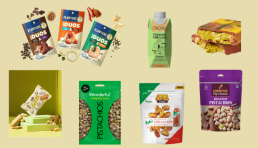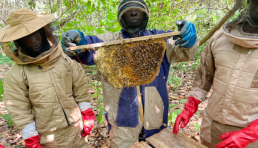Health News
Lorem ipsum
26 July 2021|
Industry Highlight: Californian Prunes

To stimulate and facilitate sustainable growth in the global Nut and Dried Fruit Industry.
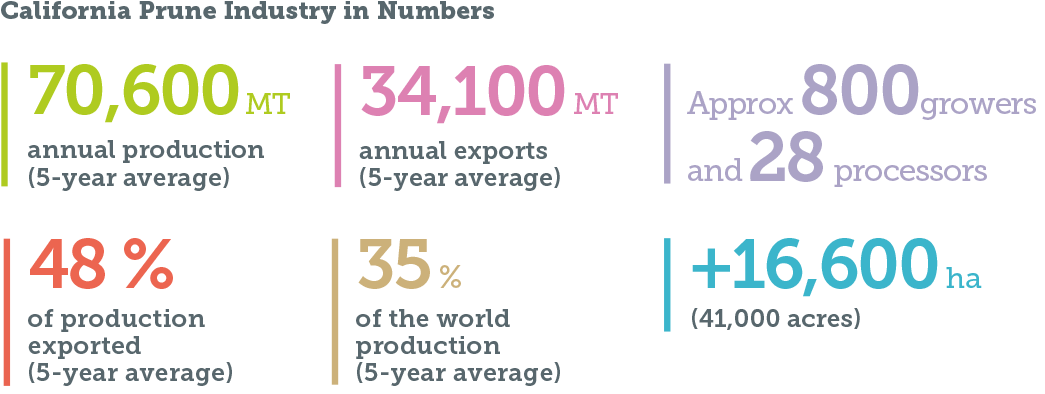
Production
California is the largest producer of prunes and the world's second-largest exporter. California Prunes are descendants of the Petit d’Agen variety, brought from France during the Gold Rush in the nineteenth century. Today these prunes are known as Improved French.
The Improved French variety is dark red to purplish with tender, dark amber flesh[1]. This fine-textured prune is medium in size and egg-shaped, with a rich, sweet flavor. Improved French dries with a 3:1 drying ratio on average. Trees are long-lived, vigorous and have an upright growth habit.
 Usually, growers must wait four to six years after planting a prune tree before seeing their labor bring fruit—literally! Even yet, it takes eight to twelve years for a tree to reach a full production capacity of 150-300 pounds (68-136 kg) of raw fruit per year[2]. An orchard will produce around three decades' worth of prunes at that stage.
Usually, growers must wait four to six years after planting a prune tree before seeing their labor bring fruit—literally! Even yet, it takes eight to twelve years for a tree to reach a full production capacity of 150-300 pounds (68-136 kg) of raw fruit per year[2]. An orchard will produce around three decades' worth of prunes at that stage.
Prune orchards in California today cover around 16,600 hectares (about 41,000 acres) concentrated in the Sacramento and San Joaquin valleys[3]. The Sacramento Valley, in northcentral California, produces about 90% of the crop[4]. Tulare, Fresno and Madera counties in the San Joaquin Valley also produce prunes.
As reported by the California Prune Board, the California Prune industry generates more than $717 million in annual economic impact each year, which flows into the state economy and supports more than 7,000 full-time equivalent jobs.
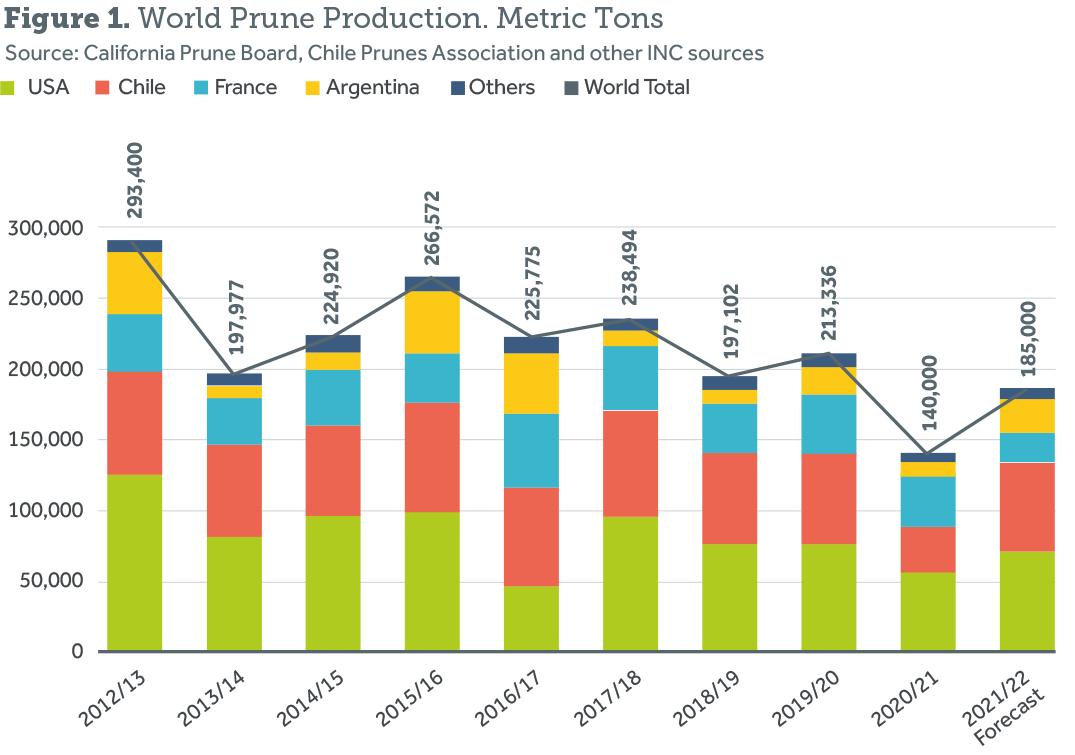

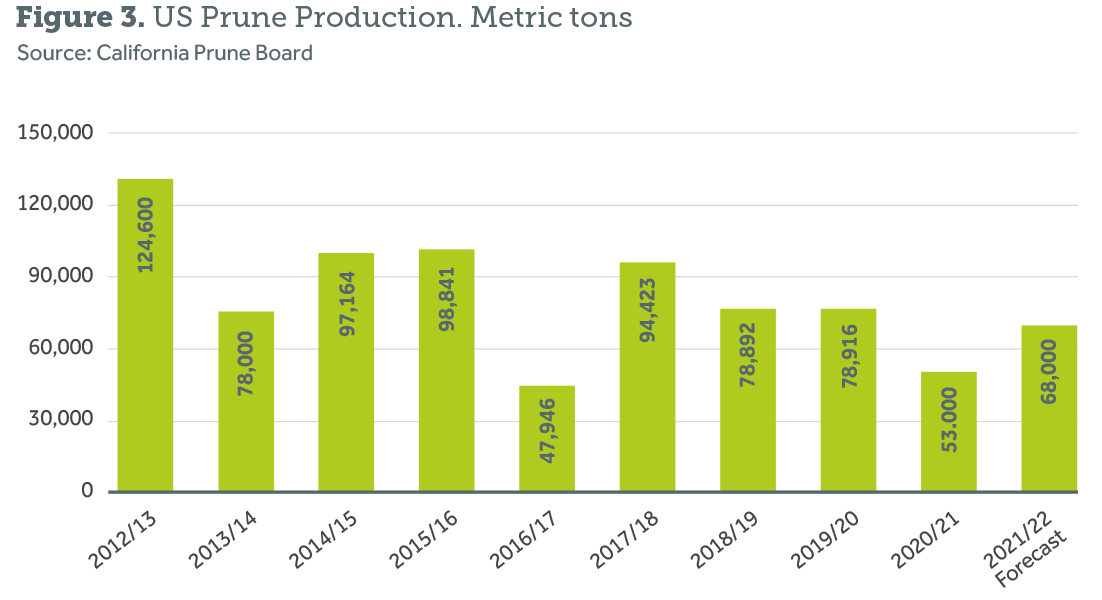
The Improved French variety is dark red to purplish with tender, dark amber flesh[1]. This fine-textured prune is medium in size and egg-shaped, with a rich, sweet flavor. Improved French dries with a 3:1 drying ratio on average. Trees are long-lived, vigorous and have an upright growth habit.
 Usually, growers must wait four to six years after planting a prune tree before seeing their labor bring fruit—literally! Even yet, it takes eight to twelve years for a tree to reach a full production capacity of 150-300 pounds (68-136 kg) of raw fruit per year[2]. An orchard will produce around three decades' worth of prunes at that stage.
Usually, growers must wait four to six years after planting a prune tree before seeing their labor bring fruit—literally! Even yet, it takes eight to twelve years for a tree to reach a full production capacity of 150-300 pounds (68-136 kg) of raw fruit per year[2]. An orchard will produce around three decades' worth of prunes at that stage.Prune orchards in California today cover around 16,600 hectares (about 41,000 acres) concentrated in the Sacramento and San Joaquin valleys[3]. The Sacramento Valley, in northcentral California, produces about 90% of the crop[4]. Tulare, Fresno and Madera counties in the San Joaquin Valley also produce prunes.
As reported by the California Prune Board, the California Prune industry generates more than $717 million in annual economic impact each year, which flows into the state economy and supports more than 7,000 full-time equivalent jobs.



Trade
California prunes are a particularly important category for U.S. dried fruit exports, ranking third after dried cranberries and raisins. The U.S. accounts for 18% of the world prune exports. Since 2016, the country has exported an average of 34,100 MT of prunes per year, the main destinations being Eastern Asia and Western Europe. Japan is the largest market, reaching 29 million $U.S. in 2020, which accounts for 24% of the U.S. export value[5].
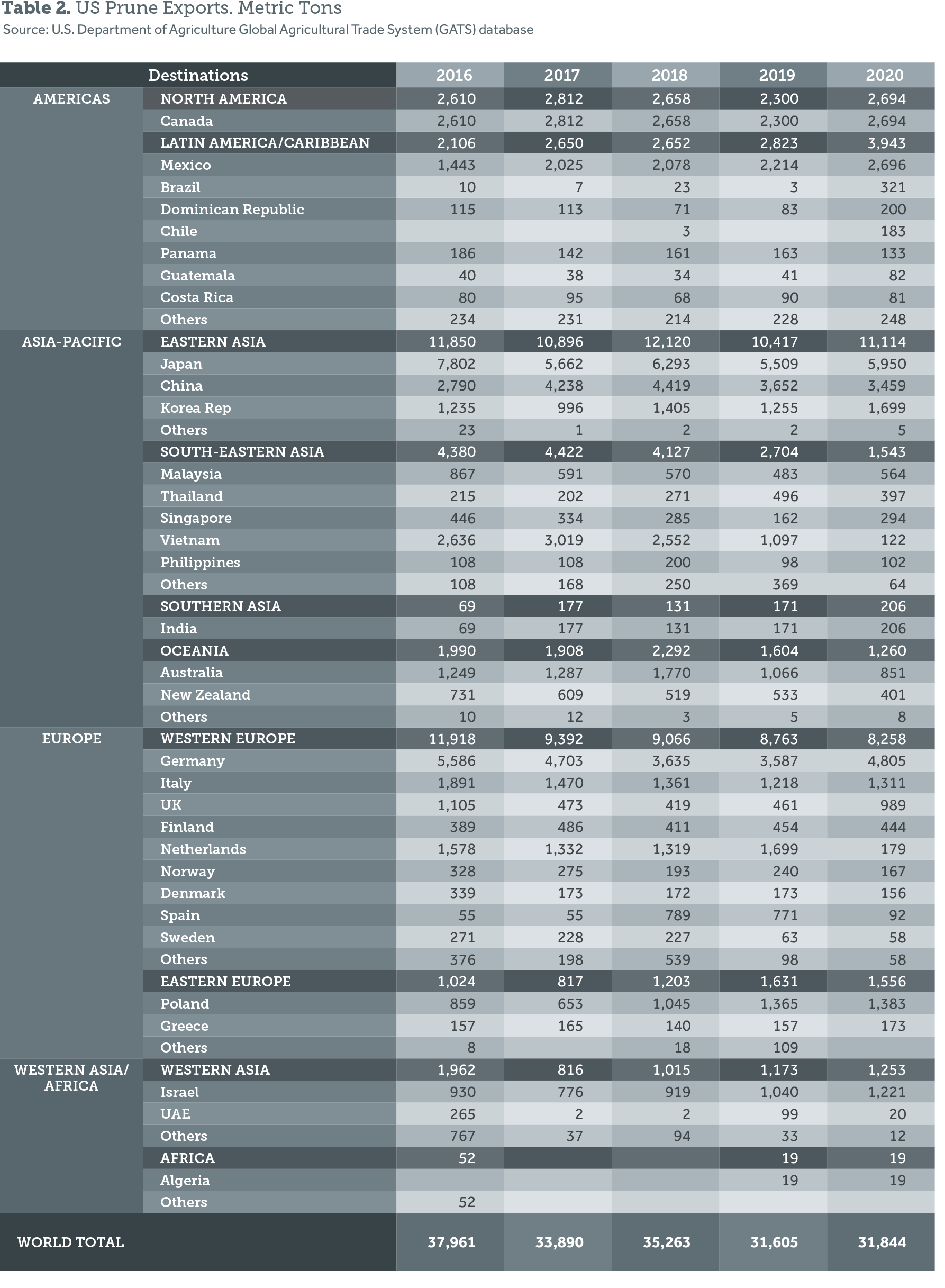
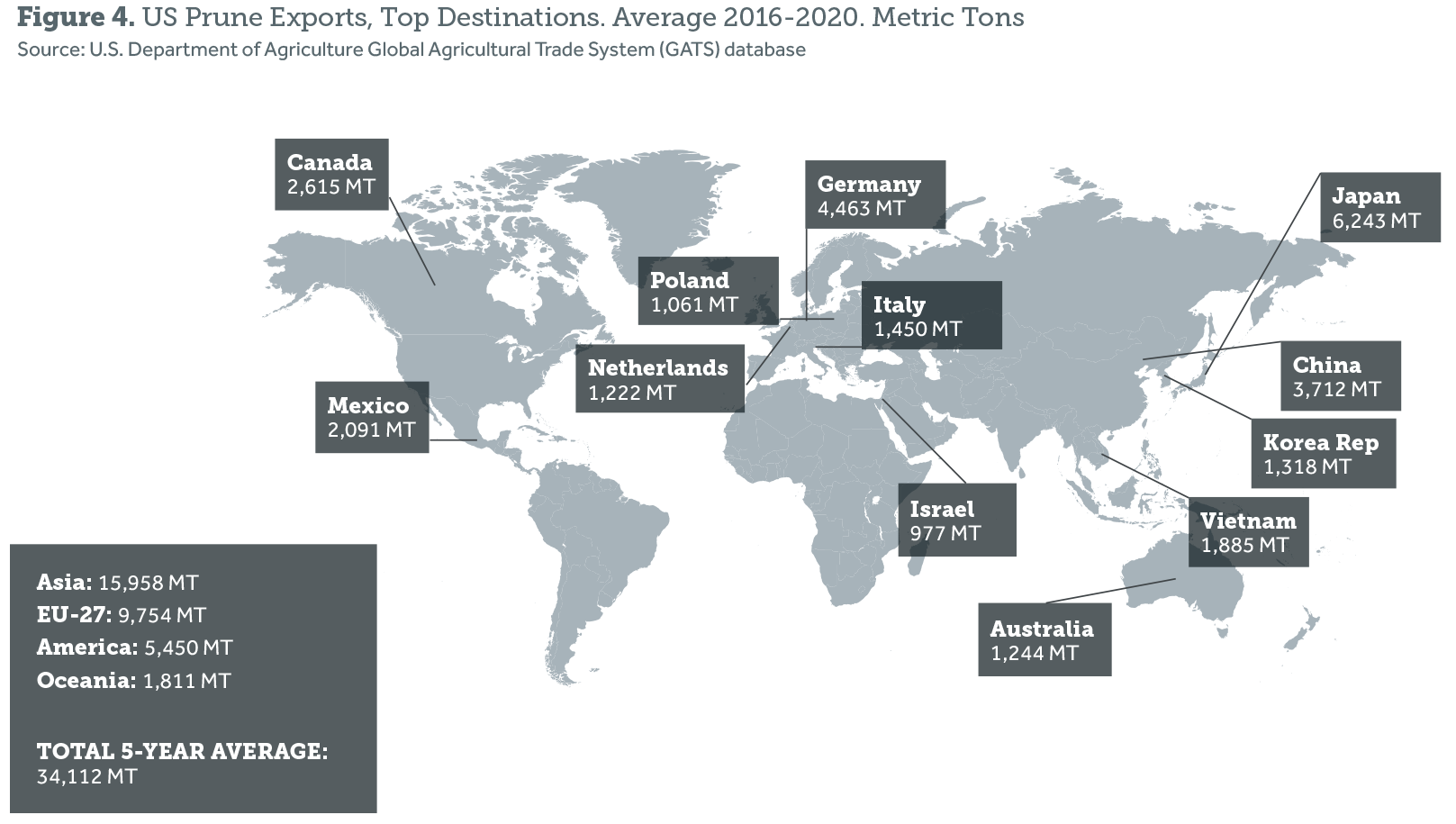


Consumption
The U.S. is the world’s largest consumer of prunes, with domestic consumption of 47,800 MT per year on average6. In a recent trend research conducted by the INC in partnership with Ogilvy, consumer trends in both mature and emerging markets showed an increasing interest in energy-boosting foods and gut health, into which prunes fit perfectly.
Based on the results of the analysis, the U.S. is the largest market for digestive health. The concept of digestive health is no longer related to mostly over-the-counter products, as it traditionally was; it is now shifting to a more organic diet focused on microbiomes and probiotics –a more preventive approach. Due to an aging society, health issues arise, which means that consumers opt for more natural products as a preventative solution to staying healthy. Besides, the focus is not only on digestive health but also on the gut-brain axis and its impact not only on physical health but also mental wellbeing.
The shift toward health and wellbeing as a holistic approach focused on whole ingredients is ideal for prunes to thrive and grow.
References:
1. Prunus Cultivar: French Improved Prune. Foundation Plant Services - University of California, Davis. https://fps.ucdavis.edu/treedetails.cfm?v=670&hidepics=yes (accessed June 2021)
2. https://californiaprunes.org/growing-harvesting/ (accessed June 2021)
3. https://www.californiaprunes.net/about-us/the-california-difference/ (accessed June 2021)
4. USDA NASS, 2017 Census. Quickstats. Available online at: https://quickstats.nass.usda.gov/ (accessed June 2021)
5. U.S. Census Bureau, Economic Indicators Division, U.S. Import and Export Merchandise trade statistics.
6. INC Statistical Yearbook, 2020/2021
Based on the results of the analysis, the U.S. is the largest market for digestive health. The concept of digestive health is no longer related to mostly over-the-counter products, as it traditionally was; it is now shifting to a more organic diet focused on microbiomes and probiotics –a more preventive approach. Due to an aging society, health issues arise, which means that consumers opt for more natural products as a preventative solution to staying healthy. Besides, the focus is not only on digestive health but also on the gut-brain axis and its impact not only on physical health but also mental wellbeing.
The shift toward health and wellbeing as a holistic approach focused on whole ingredients is ideal for prunes to thrive and grow.
References:
1. Prunus Cultivar: French Improved Prune. Foundation Plant Services - University of California, Davis. https://fps.ucdavis.edu/treedetails.cfm?v=670&hidepics=yes (accessed June 2021)
2. https://californiaprunes.org/growing-harvesting/ (accessed June 2021)
3. https://www.californiaprunes.net/about-us/the-california-difference/ (accessed June 2021)
4. USDA NASS, 2017 Census. Quickstats. Available online at: https://quickstats.nass.usda.gov/ (accessed June 2021)
5. U.S. Census Bureau, Economic Indicators Division, U.S. Import and Export Merchandise trade statistics.
6. INC Statistical Yearbook, 2020/2021
Access denied
